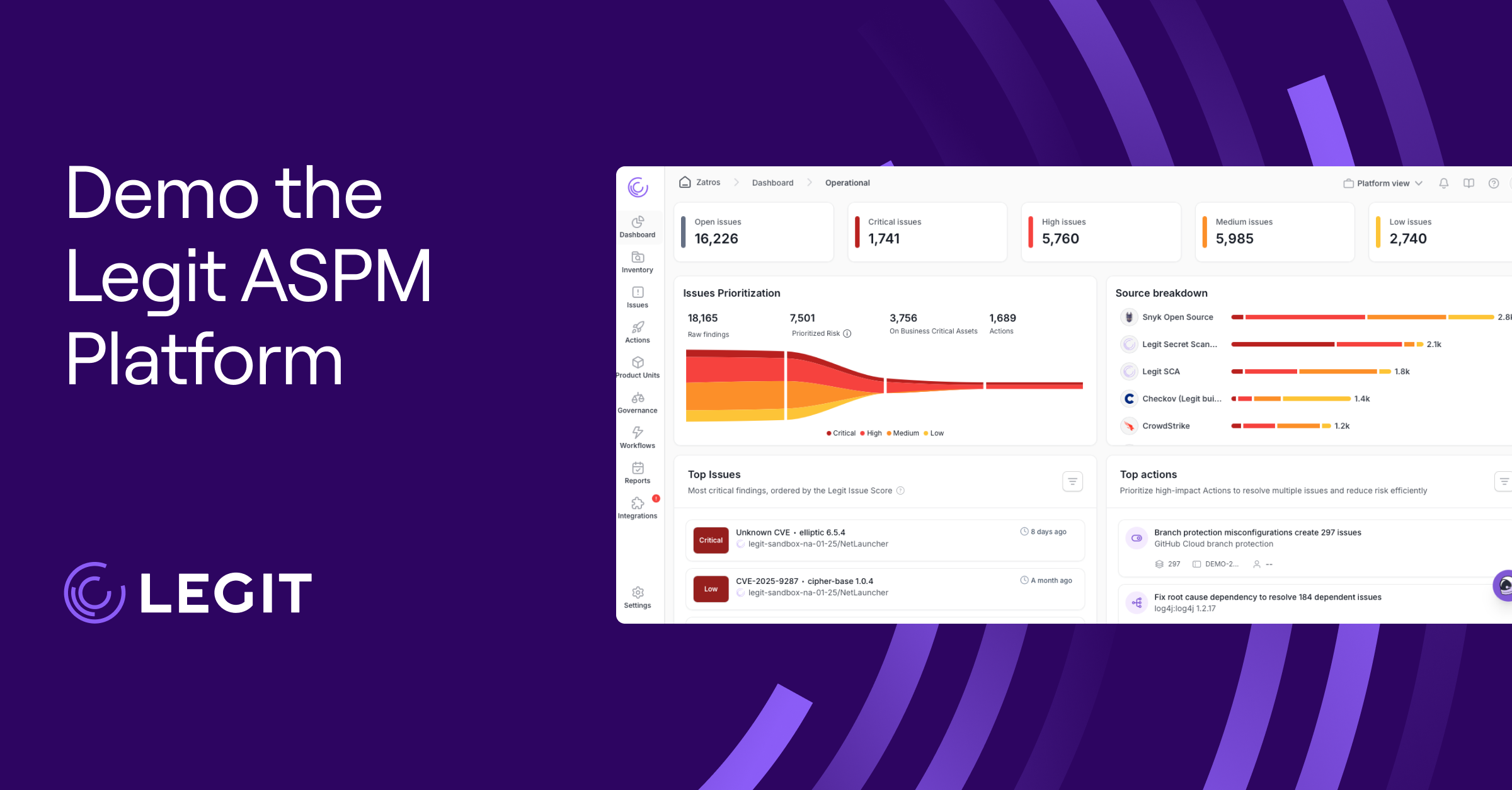In 2025, the average security breach cost organizations $4.4 million USD. And according to IBM, 97% of companies are currently lacking proper AI access controls, which weakens total system security.
It comes as no surprise that companies are now looking for new ways to improve their cybersecurity monitoring efforts. Vulnerability management starts at the development stage and continues post deployment, so continuous monitoring and threat assessment can resolve potential problems before they happen. Cybersecurity monitoring in particular is another step security professionals can use to boost their daily coverage.
What Is Cyber Monitoring?
Cyber monitoring is the process of collecting and analyzing security information to detect suspicious activity across your organization’s digital infrastructure. IT teams use monitoring tools, such as intrusion detection systems (IDSs), security information and event management (SIEM) tools, and firewalls, to continuously monitor their systems in real time. By checking network traffic, system logs, and user behavior, these tools can flag malicious activity to prevent cyberattacks and ensure endpoint security as quickly as they happen.
DevSecOps teams can also use cybersecurity monitoring to close the AI security gap. Machine learning can convert raw security information into usable data for detecting anomalies, allowing teams to expand coverage into things like cloud workloads, personal equipment, and unsafe user behaviors.
Importance and Benefits of Cybersecurity Monitoring Services
The strategic value of real-time cybersecurity threat monitoring extends far beyond threat detection. It also supports business operations and compliance efforts, especially in highly regulated industries and as part of a regular security system.
Here are some of the specific benefits your organization can get from cybersecurity monitoring:
- Enhanced threat detection and response: Continuous monitoring makes detection and containment faster, which is especially important for zero-day threats. Catching and addressing threats early minimizes their potential harm.
- Improved security posture and risk management: Security monitoring gives regular data-driven insights into an organization’s risk profile. DevOps teams can then use this information to reduce or eliminate vulnerabilities.
- Regulatory compliance: Organizations in industries like finance, healthcare, and governmental services face stricter regulations. These are also high-risk industries for breaches, so they must prove to regulators that they take adequate steps to secure data. Regular monitoring is often one of those steps, as it can catch security incidents as they happen.
- Business continuity and resilience: Strengthening an organization’s security landscape helps it withstand attacks and continue standard operations. Preventing business disruptions increases the chance of long-term recovery from a cyber attack.
Types of Cybersecurity Monitoring
A truly comprehensive security plan must include various types of cyber monitoring to cover all your bases in discovering and closing security gaps.
Network Monitoring
Monitoring tools analyze network traffic to detect suspicious activity, unauthorized access, or unusual patterns. This is useful for identifying threats to network security like malware and ransomware. IT teams can leverage modern network traffic analysis (NTA) tools and machine learning to identify anomalies, such as unexpected traffic spikes and latency or abnormal port usage.
Endpoint Monitoring
Hackers can break through security systems by accessing authorized devices, from company cellphones to internet of things (IoT) sensors or even decommissioned devices that haven’t been properly removed from the network. Endpoint detection and response (EDR) platforms can provide real-time threat detection, detailed forensic analysis, and information on patching status for endpoint devices.
SIEM and Automated Incident Response
SIEM tools centralize data across systems to provide extra visibility and identify threats that might go unnoticed in siloed scans. These tools follow automated playbooks to respond to cyber threats in real time. IT teams can strengthen SIEM’s effectiveness by integrating it with automated incident response tools, intrusion detection systems, and threat intelligence.
Cloud Security Monitoring
Cloud monitoring helps IT teams cover an often ignored source of vulnerabilities: distributed cloud environments, like multicloud and hybrid cloud infrastructure. These monitoring tools look beyond traditional network-based tools to protect cloud workloads by scanning for unauthorized configuration changes, suspicious access patterns, and other anomalies.
How to Monitor for Cybersecurity Threats: 5 Steps
Effective security monitoring requires a comprehensive approach informed by the best practices in your niche. These five steps can help you address all parts of your security landscape.
1. Conduct a Security Assessment
Security assessments begin with a thorough inventory evaluation. Identify all the assets and key elements in your IT infrastructure, such as data, software, and equipment—including those from third-party vendors. Once you have a full picture of your technological landscape, you’ll know what you have to assess for risks. Your security assessment should also take industry risks into account as early in the process as possible.
2. Determine Security Risk Goals
Use the security assessment results to establish clear monitoring objectives that align with risk tolerance levels and business priorities. Industry compliance requirements should factor into these decisions, as well as the most efficient ways to allocate the organizational resources available for security.
3. Choose the Right Monitoring Tools
After ensuring your solutions needs and components identified in the inventory and risk assessments align, it’s time to select the right tools for the job. The tools you choose should not only align with security goals and meet risk tolerance and compliance requirements, but should also function on different levels (such as network and AI compliance monitoring) for the deepest, broadest picture possible.
4. Implement Tools and Leverage Automation
Cybersecurity monitoring is most effective when integrated into daily operations. Machine learning and automation can help make this integration feel seamless while it works in the background. Integrate monitoring into DevOps pipelines so teams can catch vulnerabilities as early as possible.
5. Monitor and Iterate
Cybersecurity monitoring should involve scanning for new vulnerabilities after each new system update, patch, or reconfiguration. Scheduled scans help IT teams close security gaps and harden their security landscape against future cyber threats. However, it’s important to note that even holistic cybersecurity monitoring is only one aspect of securing data and systems.
Main Challenges in Cybersecurity Monitoring
While monitoring is an essential part of protecting data, equipment, and networks, it’s not without its challenges. Organizations may face operational or implementation set-backs that can undermine monitoring’s effectiveness.
To help you prepare, here are some of the most common challenges in cybersecurity monitoring.
Tool Compatibility
Even the best tools could be incompatible with your existing workflow or tech stack. Whenever possible, it’s a better option to choose tools your team is familiar with in some way to avoid the fiscal and temporal costs of learning curves and retraining an entire team to use new software. And always do your due diligence to ensure the tool meets business, process, security, and technical requirements.
False Positives and Negatives
Monitoring tools can be deceptively reassuring. Some monitoring tools and techniques generate a lot of false positives—and negatives. If left uninvestigated, this could worsen vulnerabilities, but checking all false alerts can also be exhausting and time-consuming for teams. This is why regularly running vulnerability testing with an iterative approach—using software and human experts—is important to catch true security issues.
Poor Configurations
Cyberattack monitoring tools often look for misconfigurations in your tech stack. However, even monitoring tools can be misconfigured. Whether it’s an internal misconfiguration in the tool or a failure to align with your system, poorly fit monitoring tools can generate more false alerts, create new vulnerabilities, or simply fail to find threats. This is another challenge best addressed with a human-in-the-loop approach, even when you’re running high-quality machine learning and AI-powered systems.
Take Continuous Monitoring to the Next Level With Legit Security
Traditional monitoring tools often focus on deployed software and equipment. While this is a critical part of vulnerability management, focusing on this alone creates a missed opportunity to catch problems much earlier in the software development lifecycle.
Your DevSecOps team needs support at every stage. Legit Security offers ways to quickly address concerns, from code vulnerabilities to improperly configured data repositories. Legit’s AI-native ASPM platform can help you build a foundation of support while closing the AI security gap, providing visibility where developers use AI code assistants or risky AI models.
Learn more about how you can secure your software with Legit Security by booking a demo.
Download our new whitepaper.


